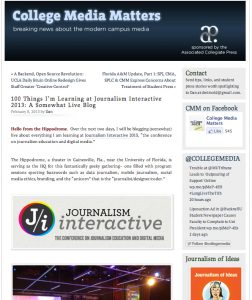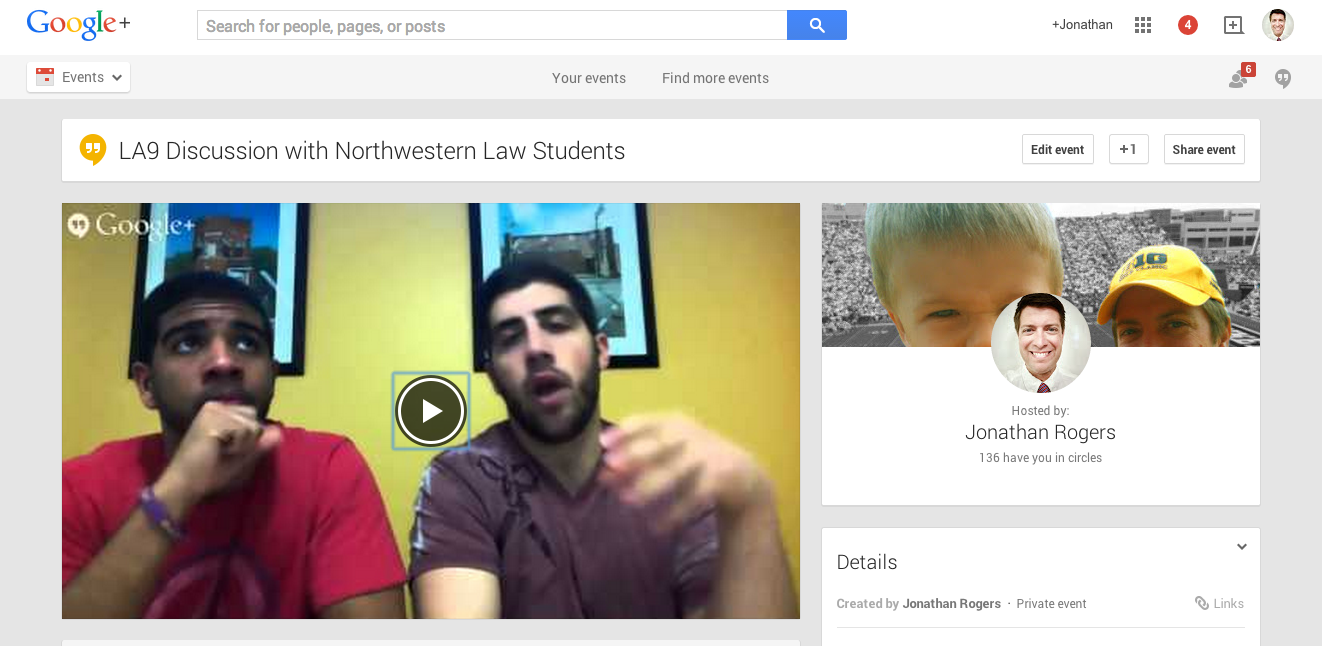7 Things That Really Struck Me From Dan Reimold’s Journalism Interactive 2013 liveblog

After Journalism Interactive 2013 was over I saw Mindy McAdams tweet a link to Dan Reimold’s “100 Things I’m Learning at Journalism Interactive 2013: A Somewhat Live Blog.” I don’t remember exactly what McAdams said but it was flattering. I didn’t have time to read it then but I save the link to read later. Unlike most of the things I save until later, I actually took some time to read this — and boy am I glad I did. It’s a great curation of things that were said and shared at the conference and I learned a lot reading it — all 100+ items.
While a lot of it dealt with data journalism, something I have yet to find the time to sink my teeth into like I should, there were a lot of other great shares within. Here are seven that stuck out to me, hopefully, they will tease you enough to click the link above and find your own favorites. I’d love to hear what struck you in the comments below.
7 Things I Found Most Interesting:
#15. The traditional introductory reporting course needs to be reinvented ASAP. One alternative pitched to JI attendees: Start by defining and sharing what journalism means. Focus on interviewing, reporting, ethics, news judgment, and the many different ways journalism content can be created and shared– rather than jumping straight into ledes and text, text, text.
This one just came at the right time. Restructuring the Introductory Journalism class at school is something BethPhillips and I have have been talking about quite a bit the last couple weeks. I finally realized I’ve basically been teaching it the same for the last 15 years. To me, this was a sign that Beth and I were smart to start the conversation and now we just need to follow through with the makeover.
#38. The average person watches video online for 26 seconds. On the phone, 15 to 20 second clips are ideal.
This all kind of makes you rethink what you’re preaching to your kids about online videos and what an online video should be.
#46. Matt Boggie, director of technology strategy for The New York Times Research & Development Lab, said Friday evening in the JI keynote address, “The web is evolving faster than our understanding of it.” According to Boggie, there have been four stages in the web’s history: the static web, the social web, the responsive web, and what Boggie calls “atmospheric networking.” This latter stage goes beyond ubiquitous computing or the “Internet of things” (“toasters and watches talking to us”). Instead, he said, “It’s a bit like air. It’s sort of around you. . . . It always feels magical, like it surrounds you.”
I just really liked how things were broken down into the four stages and how “atmospheric networking” was defined. It is pretty true. It really does surround us. In addition, the quote that ends #46 also could be used to describe The Force. Analogy bonus points in my book.
#81. Want to see sample syllabi for some A-list social media classes? Click here!
Not much to say here that the number itself doesn’t already say. Click on the link. It’s a gold mine of shared information.
#86. What should you teach students in an intro mobile reporting class? A pioneering course at Florida Gulf Coast University focuses on the following with mobile: story judgment, simple video skills, interviewing, visual thinking, writing headlines and captions, and SEO.
Again, as we are looking to restructure our intro classes, as well as basic skills our staffers have, lists like these are invaluable in helping determine what’s needed now.
#87. Essential free ebook/ibook: Mobile Reporting Field Guide.
I’ve had this ebook a while. It’s a great tool. Grab it. If you don’t have an iPad or Mac you can even download a limited PDF version of the guide as well.
#95. Here are the HTML basics every student, journalist, and educator should know, via Journalists’ Toolkit. Lots more on that site as well.
Just a nice reminder that we should be introducing code to our students, whether they think it’s important or not. There are lots of ways to do this. It’s mentioned in a couple places in Reimold’s post.
While the post is packed with great stuff, those are the seven that spoke loudest to me today. I’m sure when I look at it again, I’ll get a different list. Many thanks to Dan for putting it together and sharing it. I’d love to hear below what jumped out at you.





